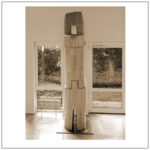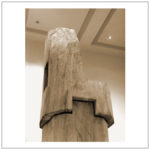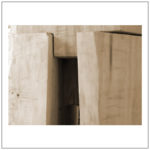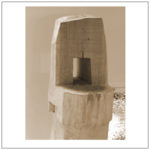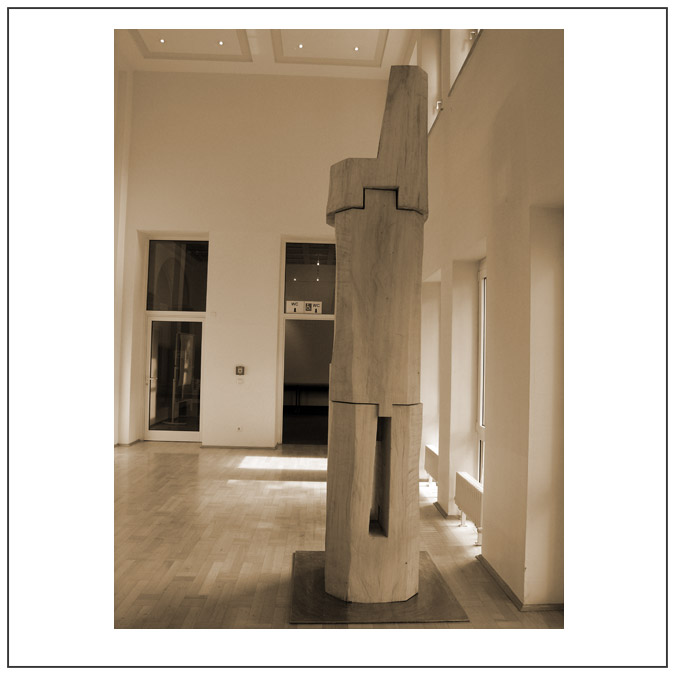
Throne of power - Seat of wisdom
2006, 340 cm high, poplar
Assembly hall of the District of Olpe, Germany
The throne is a sign of ruling power. Since prehistoric times the throne has been a symbol of power, a symbol of gods and kings. It has always served for the coronation ceremonies and the enthronement of the powerful figures of this earth. The lion throne of the historical king Solomon has served as the model of all kings‘ thrones. This ruler had become famous for his proverbial Solomonic judgement by which he settled a quarrel of life and death wisely.
We come across the throne in history and literature as a symbol-loaded piece of furniture: as a symbol of the political power, as a symbol of the judicial power of a ruler, as a throne which decides on knowledge and truth.
Thus Mary, the Mother of God, in the Litany of the Blessed Virgin Mary (Litaniae lauretanae) is called upon as sedes sapientiae, as seat of wisdom because the divine wisdom lives in her. The papal throne, too, the cathedra, is regarded as the seat of final theological knowledge if the pontiff remits ex cathedra Petri, from the chair of the apostles‘ princes, an article of faith, a dogma, for all Roman Catholics. In this respect, the pulpit, placed high above the faithful, is also a place of the announcement of Christian truth.
Which associations the sculpture of Volker Schnüttgen will evoke, which thoughts it will release in the viewer, is left open.
The throne remains vacant; there is no more Godking, no Pharaoh, no emperor who might mount it. The throne of power offers only symbolic meanings:
- as a warning against the abuse of power by the government
- as a recollection of wise Solomonic judgements by benevolent rulers
- as a stimulus for the representatives of the people, to deliberate on decisions to the best of their knowledge and conscience and to decide for the well-being of their voters
- as a hint at the sublimity which is inherent in a wise employment of power
- as a token of the rise above injustice and as a token of the obligation to administer truth and justice.
In this understanding, the THRONE OF POWER changes into a SEAT OF WISDOM. Thus the head of the sculpture is metaphorically transformed into the head of a human being who by reflection gains enlightenment and the knowledge of what is good for his fellow-men and -women.
Let wisdom therefore alight this throne!
(Presentation of the sculpture by Klaus Droste to District of Olpe parliamentarians, August, 24, 2006)
